Study on the Influence of Wax Content on the Phase Characteristics of Formation Fluids in Condensate Gas Reservoirs(Part 2)
2.2 Dew Point Pressure Characteristics of Fluids in Formations with Different Wax Contents
The formation temperature of well Dabei 1101 is 116.78℃, and the formation pressure is 90.207MPa. Using the stepwise depressurization approximation method, the HPVT-150 high-pressure full temperature PVT instrument was used to test the dew point pressure of fluid samples with different wax contents at formation temperature. The results are shown in Figure 1.
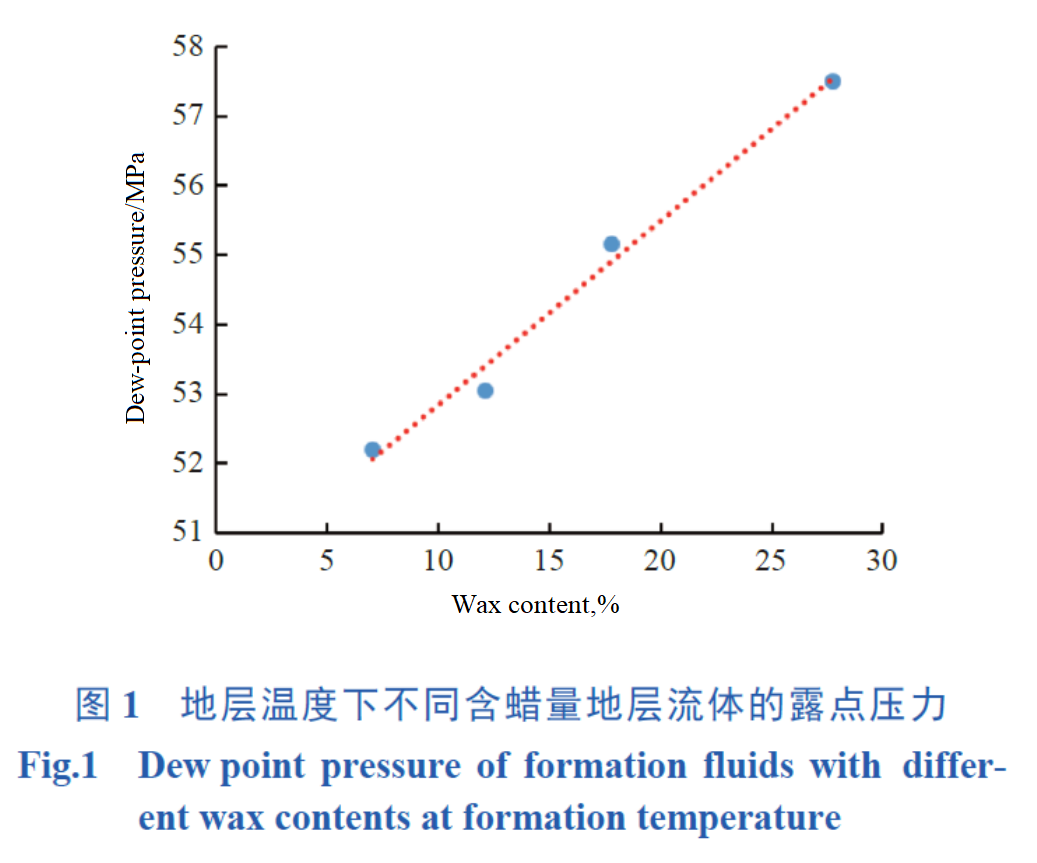
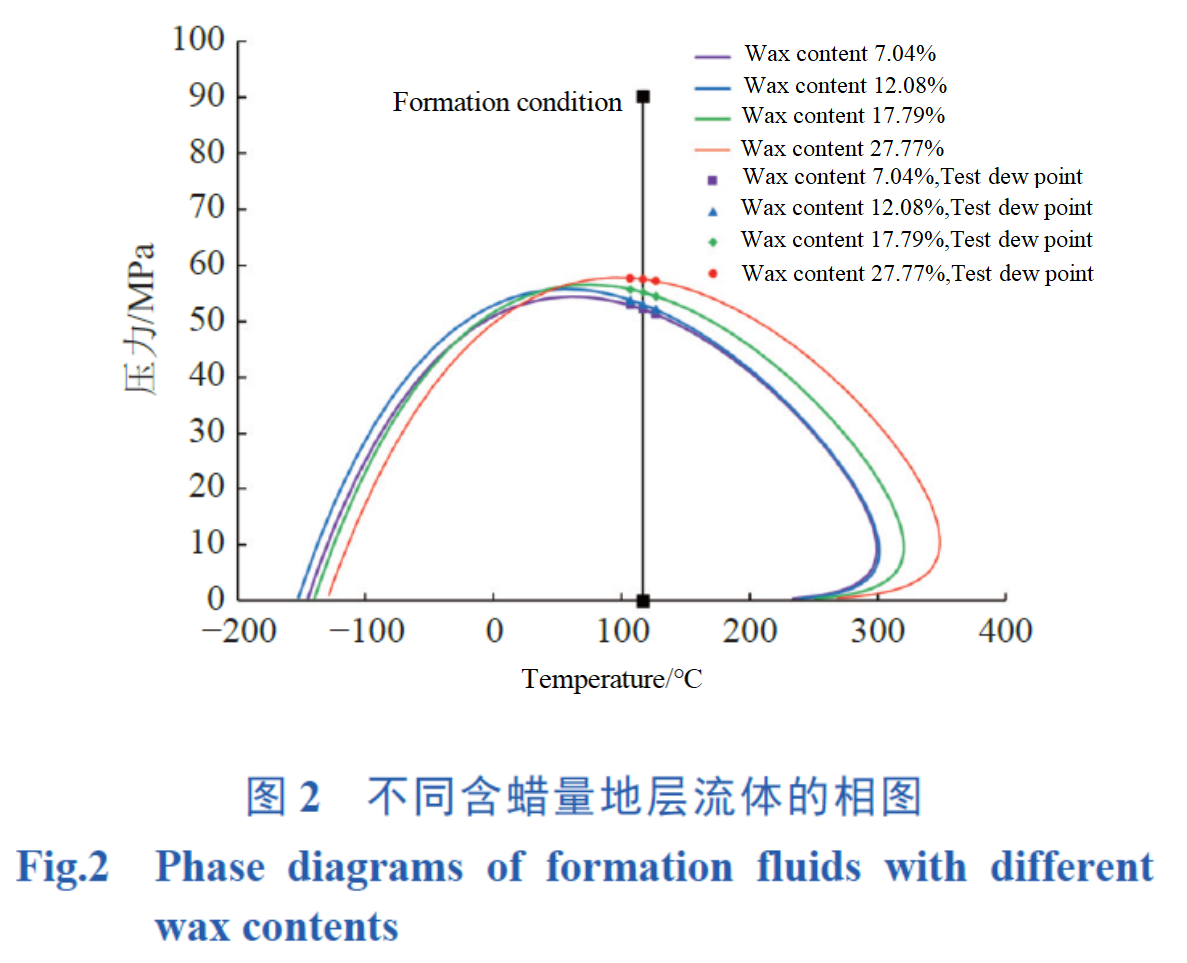
Figure 2 shows the phase diagram of fluid samples from formations with different wax contents.From Figures 1 and 2, it can be seen that the dew point pressures of formation fluids with wax contents of 7.04%, 12.08%, 17.79%, and 27.77% at formation temperature are 52.21, 53.06, 55.17, and 57.50 MPa, respectively. The higher the wax content, the higher the dew point pressure, and the dew point line shifts to the right. This is because the higher the wax content of the formation fluid, the more heavy components it contains. When the pressure decreases, the heavy components preferentially precipitate, and the heavy components have higher dew point pressure, resulting in an increase in dew point pressure of the formation fluid, causing the formation fluid to undergo phase transition at higher pressure. This indicates that as the temperature and pressure decrease in the wellbore, the heavy components in the condensate oil preferentially precipitate, and the wax precipitation point increases, leading to a deeper wax deposition position in the wellbore. This understanding provides a basis for the design of on-site PVT sampling depth and wax removal depth.Using linear regression method to fit the relationship between dew point pressure (pd) and wax content (ωw) in Figure 1, the result is:
.png)
According to equation (1), for every 1% increase in wax content, the dew point pressure increases by approximately 0.2642MPa. Equation (1) can be used to predict the dew point pressure of formation fluids with different wax contents at formation temperatures.
2.3 Constant Mass Expansion Characteristics of Fluids in Formations with different Wax Contents
The constant mass expansion test (CCE test) was conducted on fluid samples with different wax contents at different formation temperatures using the HPVT-150 high-pressure full temperature PVT instrument. The results are shown in Figures 3-6.From Figure 3, it can be seen that at pressures below 30 MPa, as the pressure increases, the relative volume of fluids in formations with different wax contents rapidly decreases; When the pressure exceeds 30MPa, the decreasing trend of relative volume of fluids in formations with different wax contents gradually slows down as the pressure increases.From Figure 4, it can be seen that as the pressure increases, the deviation coefficient of fluids in formations with different wax contents increases, and the deviation coefficient shows a linear relationship with pressure.From Figure 5, it can be seen that as the pressure increases, the volume coefficient of fluids in formations with different wax contents decreases.From Figures 4 and 5, it can also be seen that the relative volume, deviation coefficient, and volume coefficient of formation fluids with different wax contents are similar. This is because the wax in formation fluids is mainly a part of the heavy components above C11, and its proportion in formation fluids is extremely low. Therefore, the wax content has little effect on the relative volume, deviation coefficient, and volume coefficient of formation fluids. The experimental results further prove that the expansion ability of formation fluids with different wax contents is similar.From Figure 6, it can be seen that the saturation of the anti condensate liquid in high wax content formation fluids is higher. This is because the higher the wax content in the formation fluid, the more heavy components it contains. At the same time, due to the higher dew point pressure of the heavy components, they are more likely to precipitate from the condensate gas as the pressure decreases, resulting in an increase in the saturation of the anti condensate liquid.This indicates that as the temperature and pressure decrease in the wellbore, heavy components in the condensate oil preferentially precipitate, the wax precipitation point increases, the condensate content increases, and the wax in the formation fluid preferentially precipitates at deeper positions in the wellbore. The influence of this factor should be considered in establishing a wax deposition prediction model.
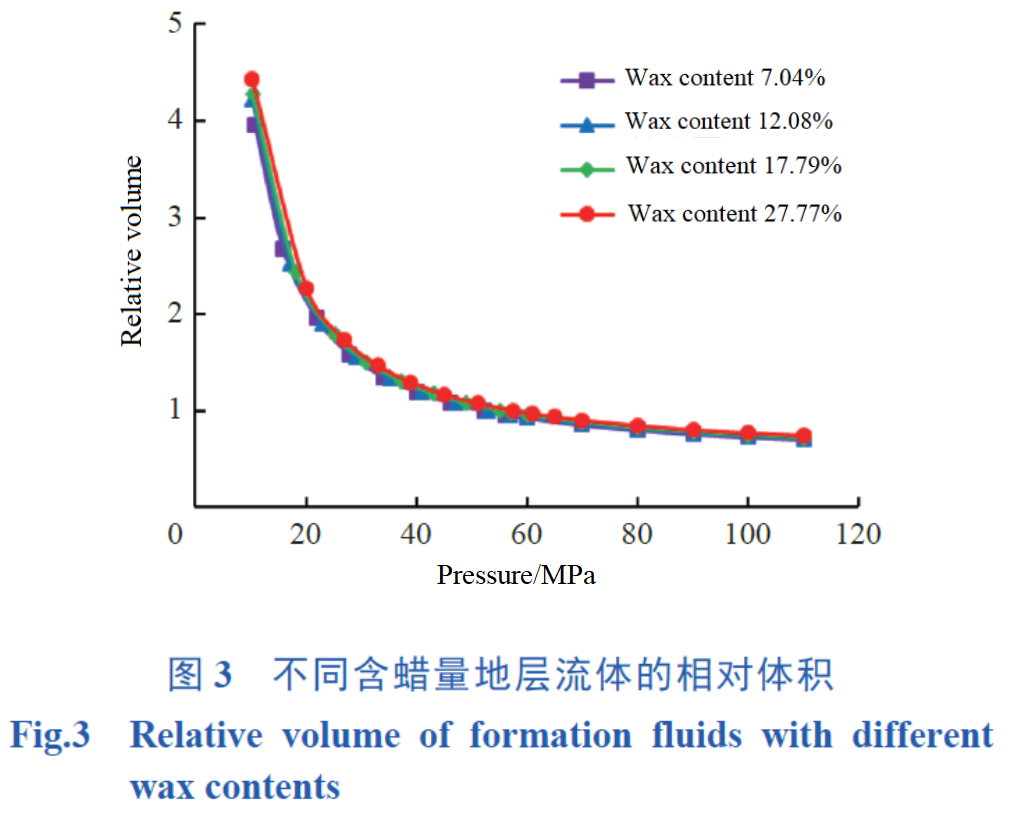
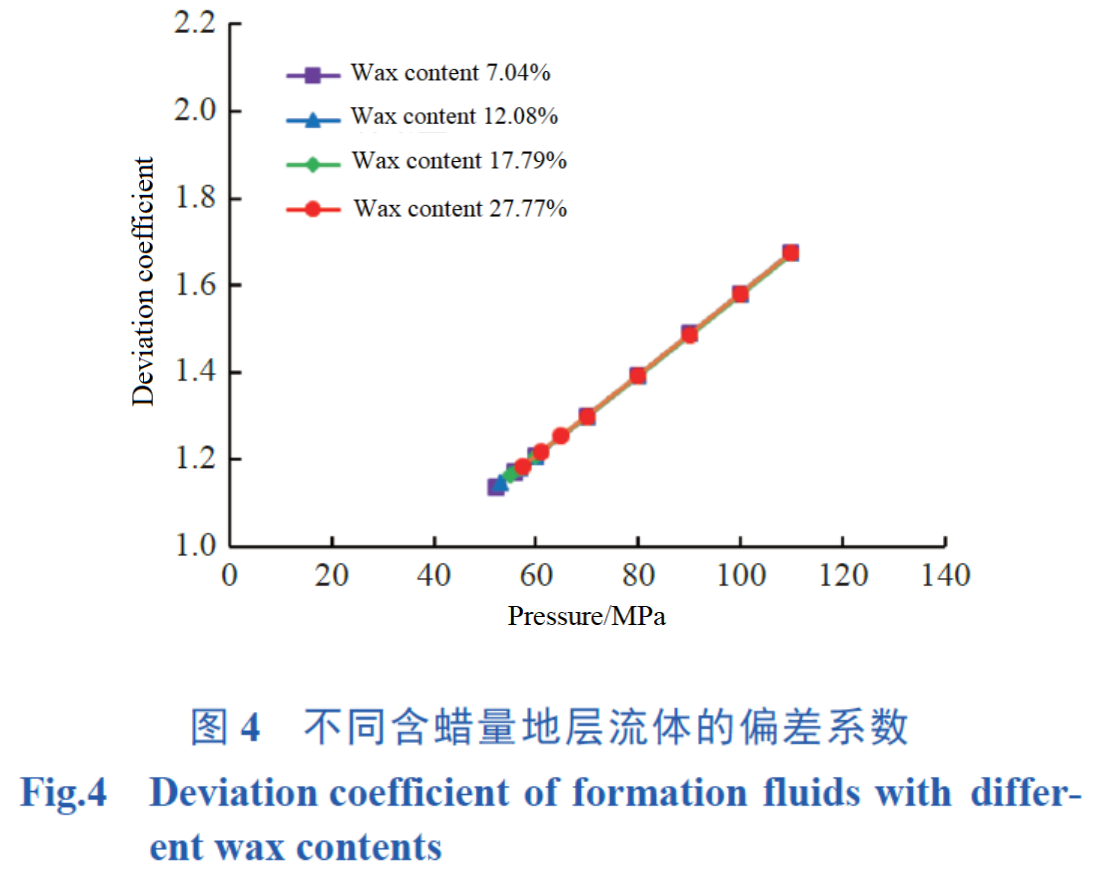
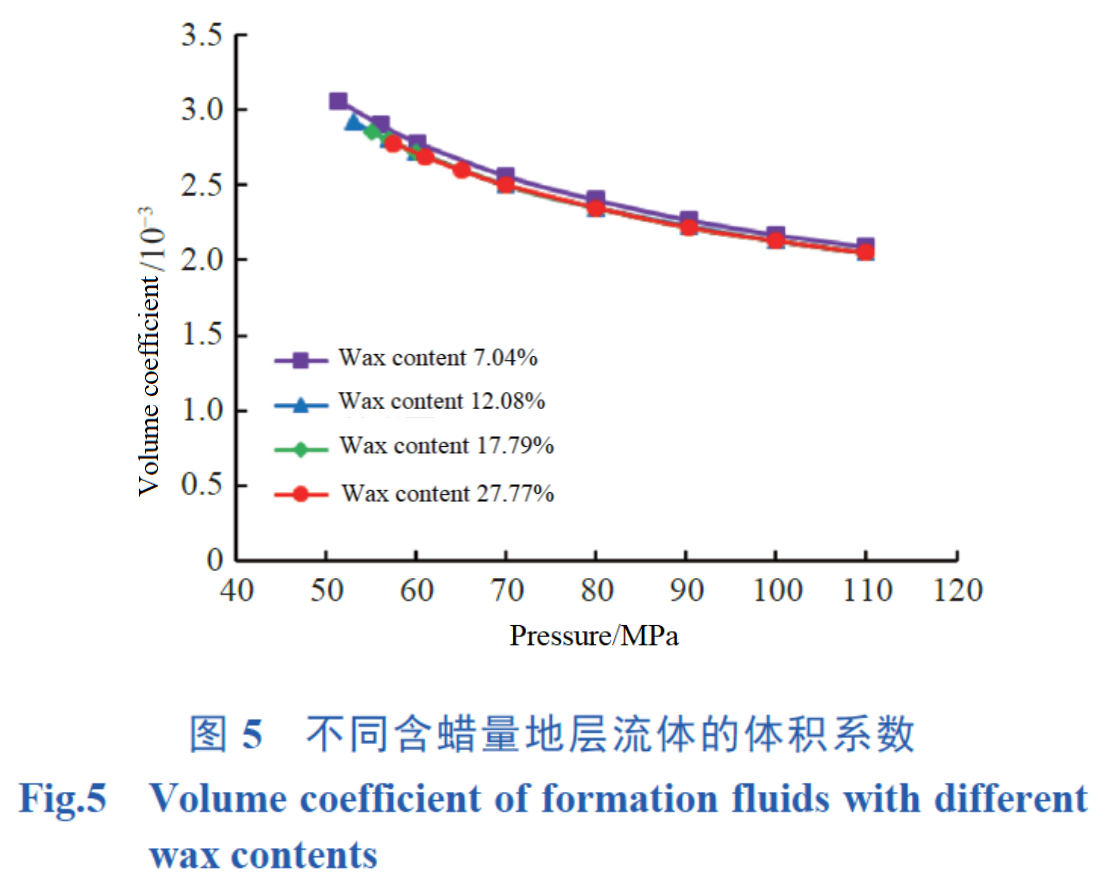
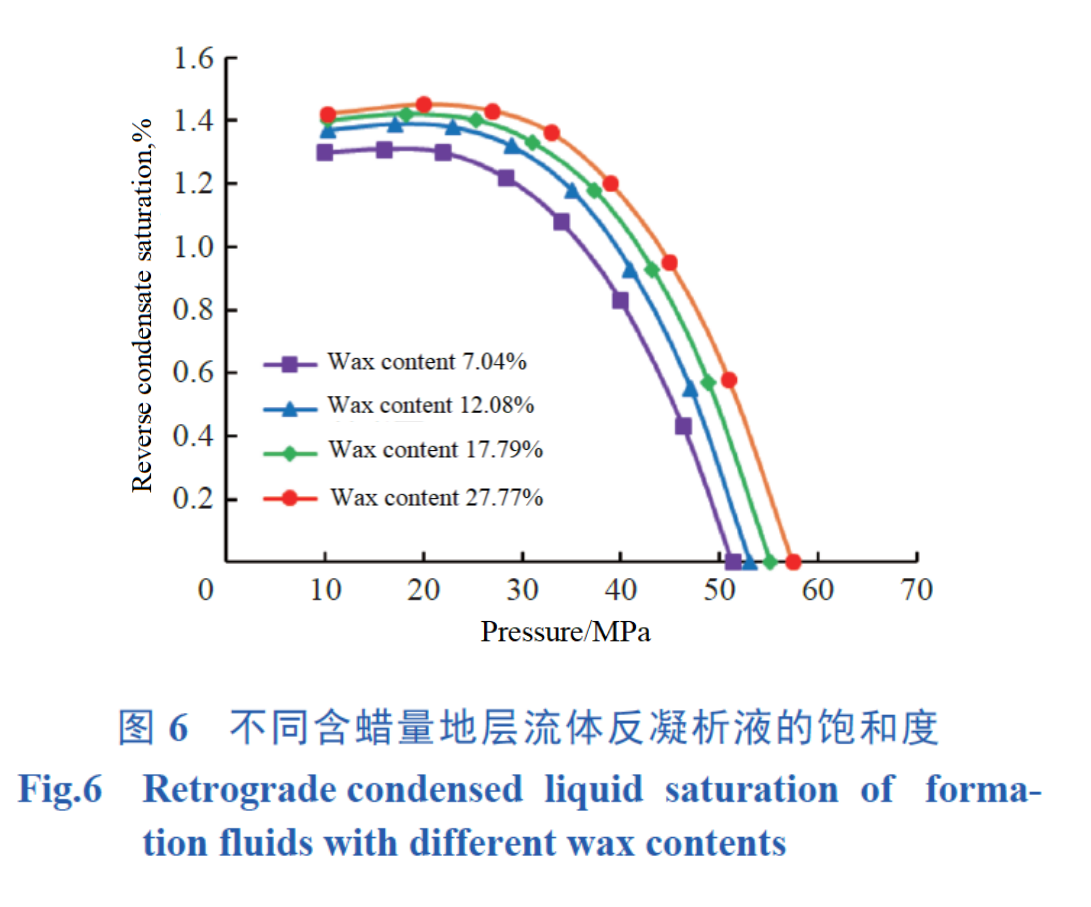
2.4 Characteristics of Constant Volume Failure
The HPVT-150 high-pressure full temperature PVT instrument was used to conduct constant volume depletion tests (CVD tests) on fluid samples from formations with different wax contents at formation temperatures. The results are shown in Figures 7-9.From Figure 7, it can be seen that the higher the wax content in the formation fluid of the condensate gas reservoir, the higher the saturation of the reverse condensate liquid. The overall saturation of the reverse condensate liquid in the condensate gas reservoir is less than 1.29%. Both constant volume depletion and constant mass expansion tests have obtained similar results, which proves the accuracy of the experiment.From Figure 8, it can be seen that the influence of wax content on the deviation coefficient of equilibrium gas phase in the produced formation fluid is relatively small. This is because the equilibrium gas in the formation fluid is mainly composed of light components below C6, so the influence of wax content on its deviation coefficient is relatively small.From Figure 9, it can be seen that under the waste pressure (10 MPa), the recovery degree of condensate oil decreases with the increase of wax content. The main reason is that more heavy components in high wax content condensate gas reverse condense, exacerbating the loss of formation reverse condensate oil and leading to a decrease in the recovery degree of condensate oil.
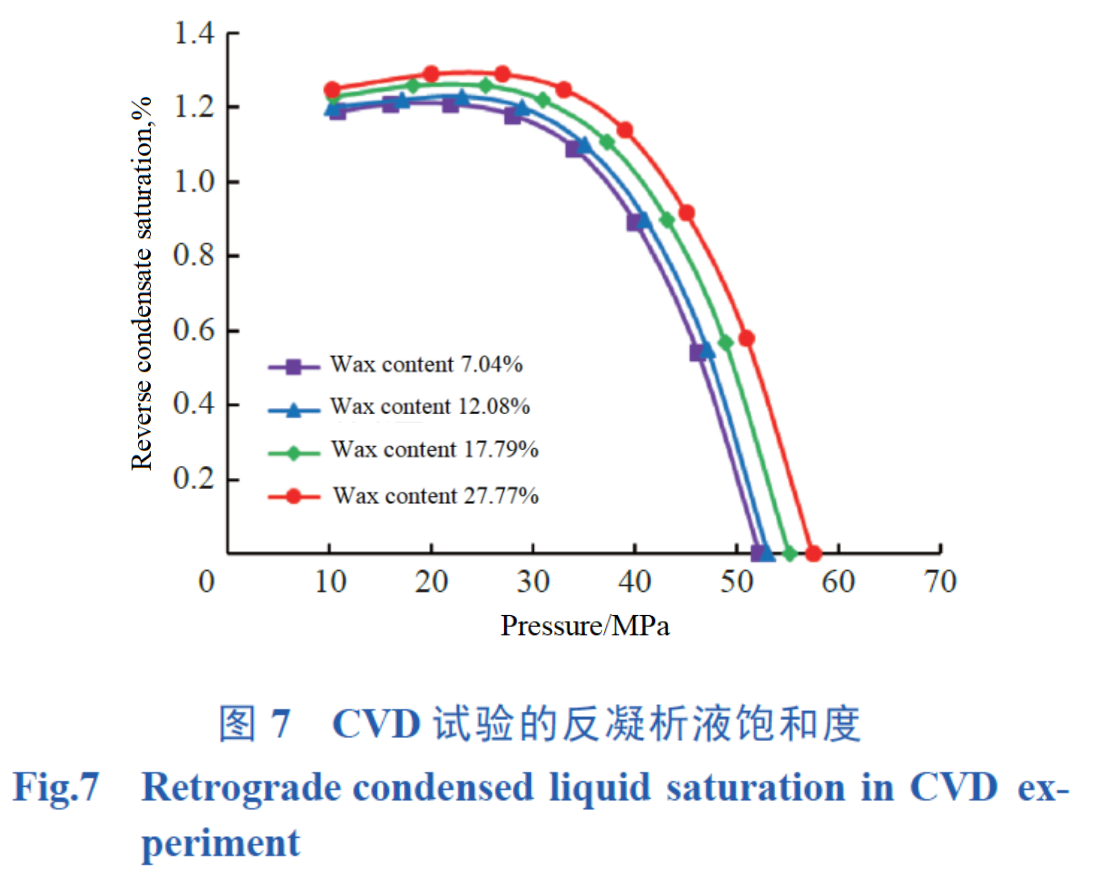
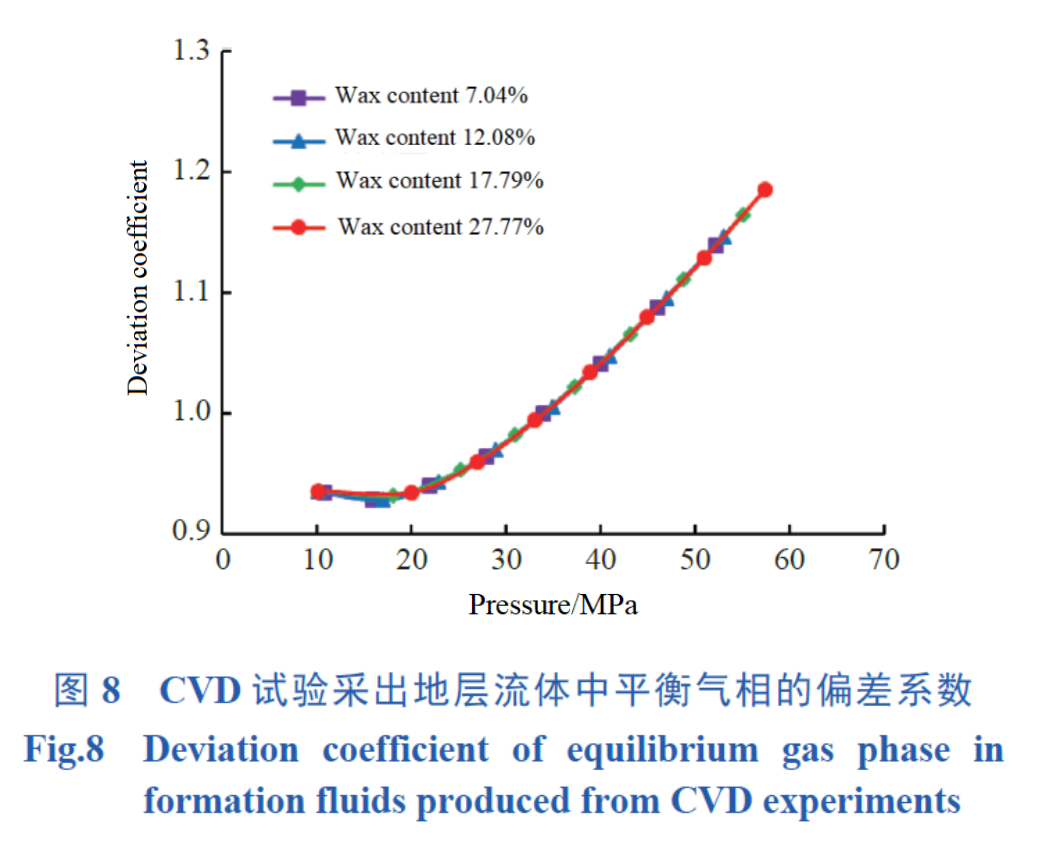
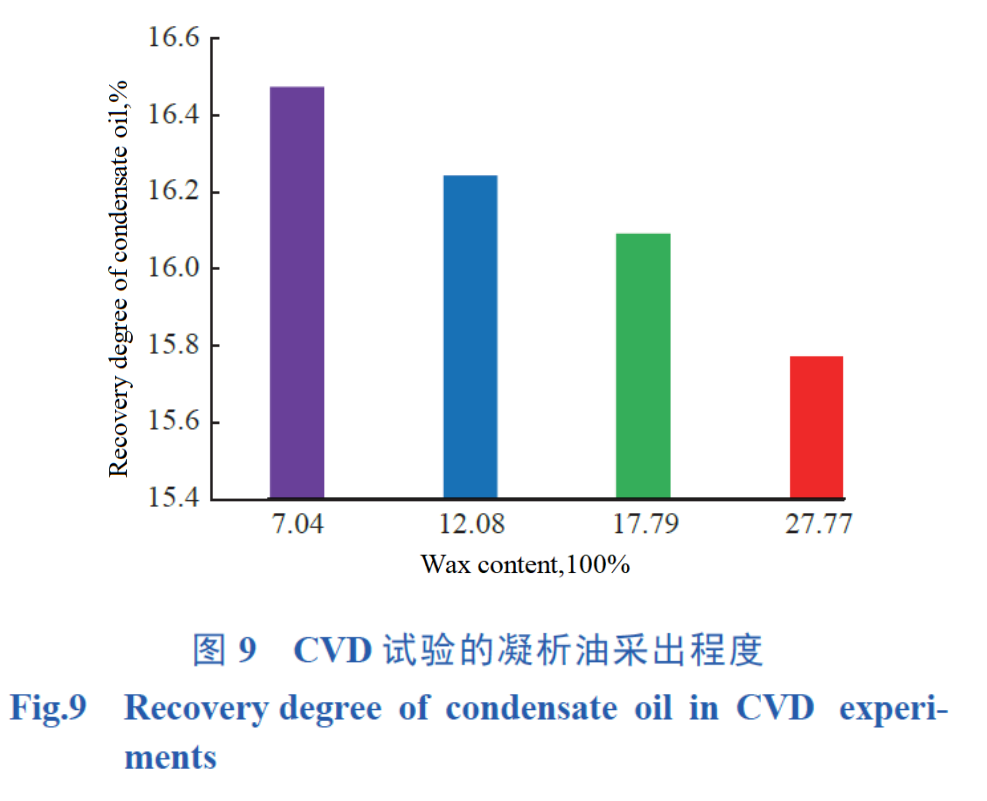
3. Conclusions
1) An experimental study was conducted on the influence of wax content on phase characteristics using gas separated from surface condensate oil and separator in well 1101 of the Dabei condensate gas field. Through flash evaporation experiments, it was found that the higher the wax content, the higher the content of heavy components above C11 in the flash evaporation oil components, and the smaller the change in the flash evaporation gas components. At the same time, the higher the content of heavy components in the formation fluid components, the higher the density of the condensate oil obtained by flash evaporation.
2) Analyzing the dew point pressure of fluids in formations with different wax contents, it was found that there is a linear relationship between dew point pressure and wax content. A 1% increase in wax content corresponds to a 0.264 2 MPa increase in dew point pressure. The reason for this is that fluids in formations with high wax content contain more heavy components, which preferentially precipitate, leading to an increase in dew point pressure.
3) The influence of wax content on the swelling ability of formation fluids is relatively small. As the wax content increases, the proportion of heavy components in the formation fluid increases, and the anti condensation effect is enhanced, resulting in a decrease in the recovery degree of condensate oil. This is because the anti condensation effect of heavy components in high wax formation fluids increases the loss of condensate oil in the formation.
4) During the production process of condensate gas wells, as the wellbore temperature and pressure decrease from the bottom of the well to the wellhead, heavy components in high wax containing fluids preferentially precipitate. This indicates that the location of wax deposition in the wellbore deepens with the increase of wax content in the formation fluid, and the wax in the formation fluid preferentially precipitates at deeper positions in the wellbore, resulting in a decrease in wax content in the wellbore fluid from the location of wax deposition to the wellhead. The influence of wax content on the dew point pressure and reverse condensate saturation of formation fluids can be used to determine the depth of downhole sampling, wax removal depth, and improve the wax deposition prediction model.
